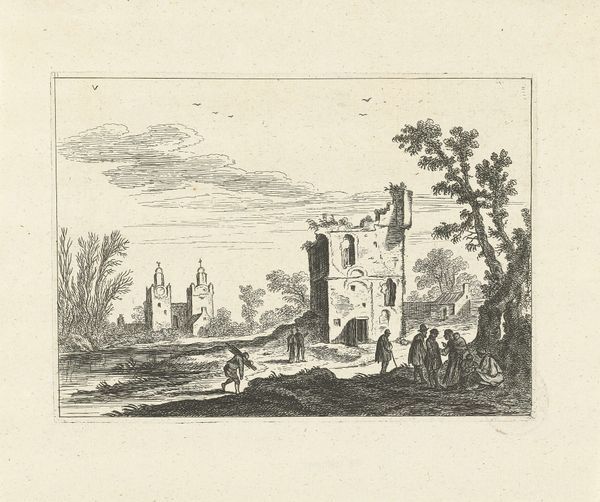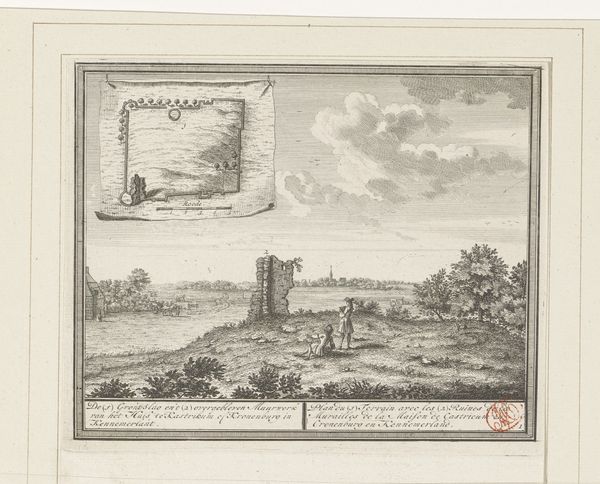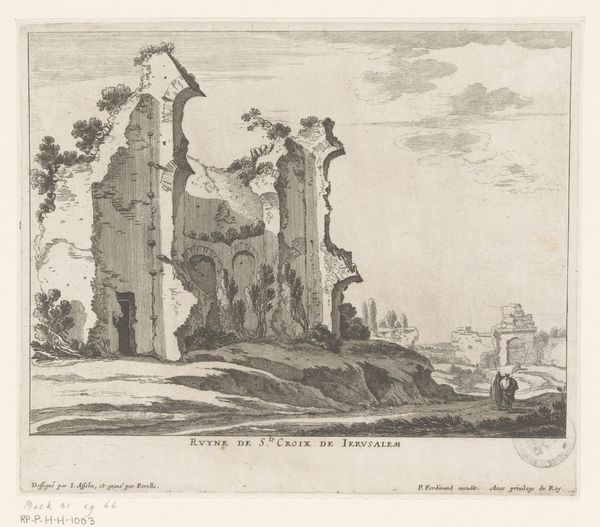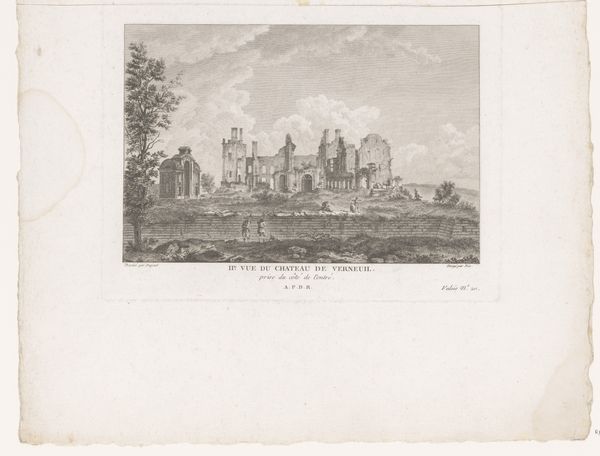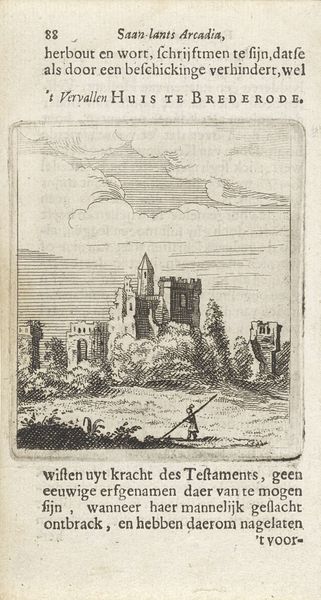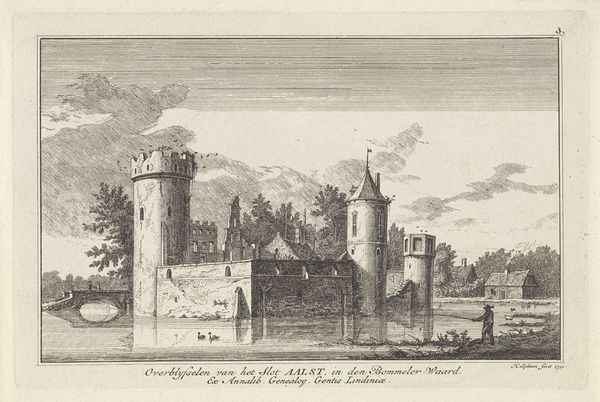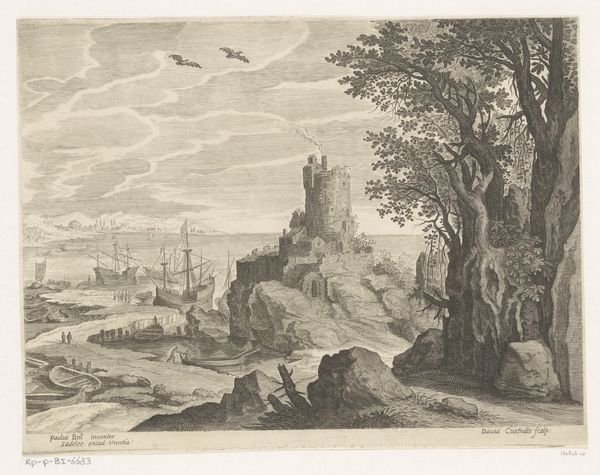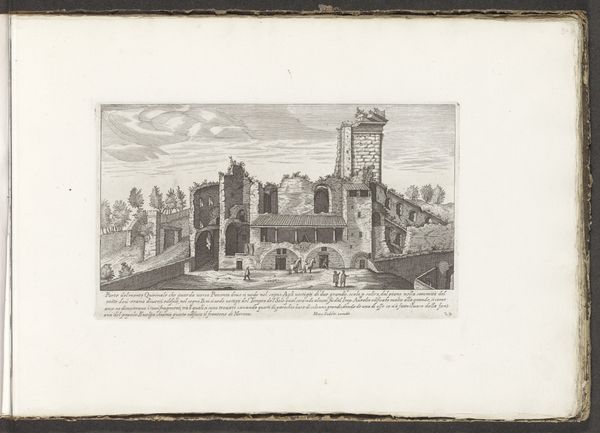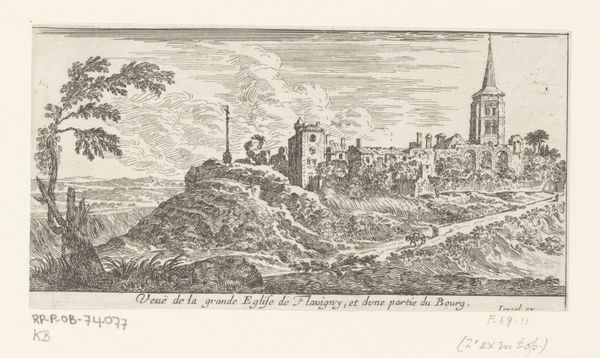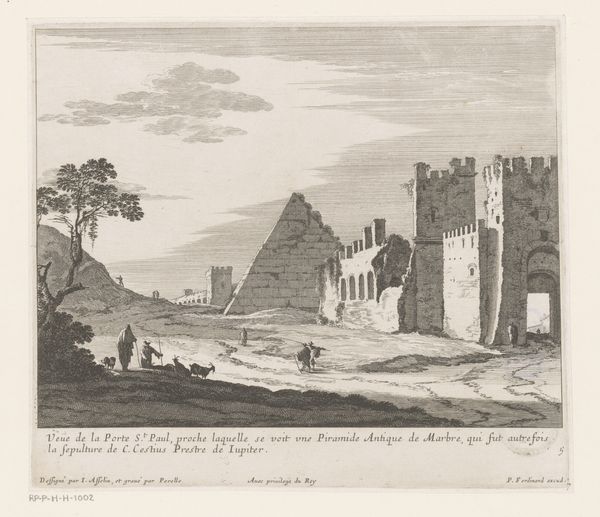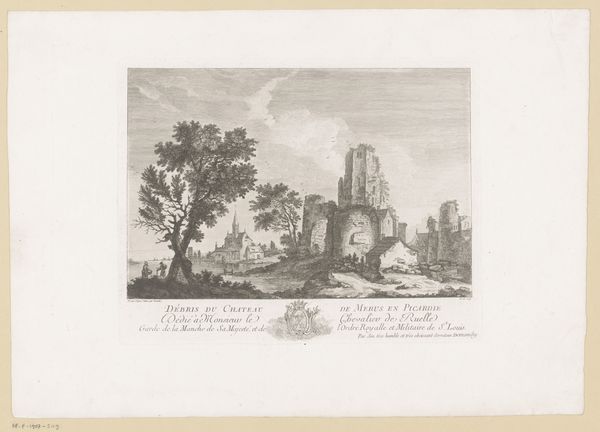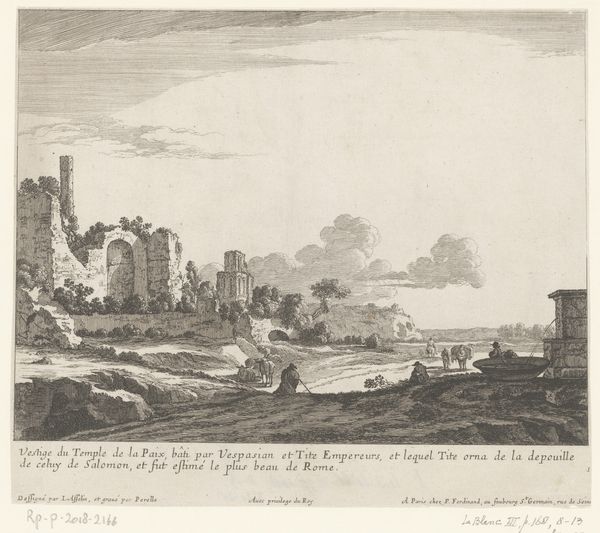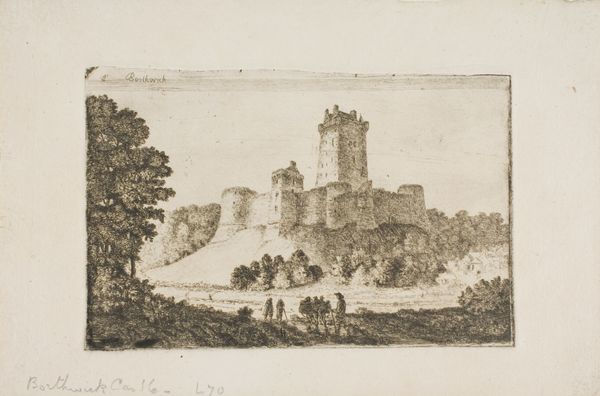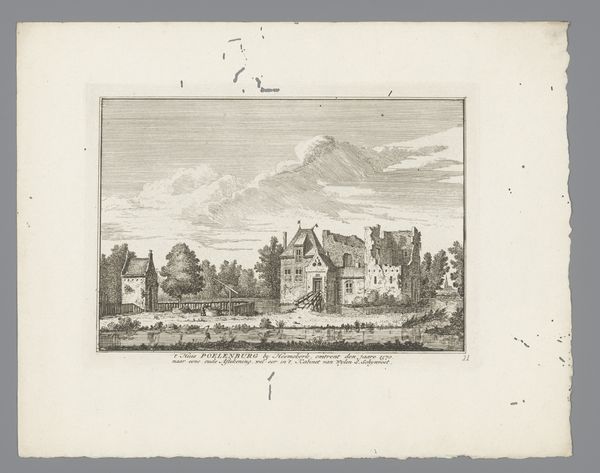
Dimensions: height 83 mm, width 110 mm
Copyright: Rijks Museum: Open Domain
Hendrik Spilman made this print of the Castle of Wouw in 1739 using etching and engraving. The linear quality comes from the way the image was created. Spilman would have covered a metal plate with a waxy, acid-resistant substance, then scratched away lines to expose the metal. Immersed in acid, these lines would be eaten away, creating grooves. Ink was then applied to the plate, filling the grooves. The high pressure of the printing press transferred the ink to paper, resulting in the image we see. The print medium was relatively new and distinctly different from painting. It democratized image production, making it possible to disseminate images widely and cheaply. The crisp precision of the etched line also lent itself to detailed, accurate depictions. The print’s success wasn’t only about the art, it was about the technology of reproduction.
Comments
No comments
Be the first to comment and join the conversation on the ultimate creative platform.
